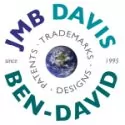Foreword:
The issue of patentability of computer related inventions in the US, Europe and Japan, is well known, and has been so for a number of years. This matter had not really been tackled in Israel, however, until Israel Patent Application No. 68409, filed by United Technologies Corporation, went to appeal. Until then, no consistent position had been adopted by the Israel Patent Office. Indeed, once the 68409 application was brought to appeal, the prosecution of many computer-related cases was frozen until the appeal was resolved.
The position in Israel is now similar to that of many other 'enlightened' countries, such as those listed above.
While the following case appears to be an adoption of generally accepted practice by the Israel system, it nonetheless makes for interesting reading.
The decision discussed below was handed down on 25 October 1994.
The Case:
The matter of COMPUTER RELATED INVENTIONS featured in the decision of Judge Shalom Brenner in the Jerusalem District Court, in the matter of United Technologies Corporation (Appeal 23/94).
Interpretation of the following sections of the Israel Patents Law, 1967, was at issue:
Section 2. "The owner of a patentable invention is entitled to apply for the grant of a patent in accordance with the provisions of this law."
Section 3. "An invention, whether a product or a process, which is new, useful and susceptible of industrial or agricultural application, and which involves an inventive step, is a patentable invention."
Section 13. "The specification shall end with a claim or claims defining the invention: Provided that each claim shall reasonably arise out of the description contained in the specification."
The invention, which was the subject of Israel Patent Application No. 68409, related to a control and regulatory system for fuel supply to a helicopter engine during flight, its main components being:
- physical components which frequently sample data e.g. airspeed, height, engine rotations, rotor blades angle and the rate of fuel flow to the engine; and
- a computerized control unit which receives and programs the data from (i), in order to cause changes in the rate of fuel flow to the engine for the purpose of economizing fuel consumption, the physical components being responsive to the control unit's instructions to release fuel.
The Examiner had rejected the Application on the basis that:
- the main novelty of the invention resided in software or a programmed computer (Section 3);
- the claim is functional at the point of novelty (Section 13); and
- disregarding the allegedly unpatentable software feature, the invention was the same as that claimed in Applicants' Israel Patent Application No. 68408(Section 2).
The matter came before the Registrar, who upheld only the Examiner's objection (a).
Applicants appealed this finding to the Jerusalem District Court.
It was common ground between the parties that the invention was for a regulatory system for fuel supply to a helicopter engine, which reduced to a minimum the fuel consumption during flight, that the system in fact reduces fuel consumption by about 10%, and that the essence of novelty of the invention lay in the computer program which corrects and/or regulates and thus economizes the fuel consumption.
The questions for decision were whether an invention is patentable in which one of the components (in this case an essential component) is a computer program, and more particularly whether such an invention meets the criteria for patentability recited in Section 3 of the Patents Law.
The Registrar (as Respondent) contended that whereas in the present case the invention comprised known and novel elements, it was appropriate to examine the novel element(s) separately in order to determine e.g. compliance with Section 3. Thus, if such novel element was found not to comply with Section 3 because it was merely (for example) a "mental step", then the invention as a whole would be deemed to be unpatentable.
Respondent further argued that Section 3 categorized an invention as either a product or a process, that the present invention was a process, and that precedent had established that a process means material treatment of a substance in order to change its state or shape (In re Rosenthal, Tel Aviv Appeal 501180, District Court Decisions 1984 (c) 441). By contrast, the invention of the Application in suit utilized merely calculations and transference of data and did not result in any change of shape or structure of any of the components, so that there was no invention as defined in Section 3.
Respondent still further argued that the invention or at least its essential component was computer software which operated merely an unpatentable mental process.
Appellants argued, inter alia, that the invention should have been examined as a whole and that if so examined it would have been found to comply with Section 3.
The Court allowed the Appeal for the following reasons:
- The claimed system of physical components + computer program should have been examined as a whole. The position was similar to a "combination patent" in which known elements may be combined (in contrast to a mere collocation of integers) to achieve a uniform objective having novelty and inventive step. (The majority opinion in Diamond, Commissioner of Patents and Trademarks v Diehr & Lutton, 209 USPQ 1, which dealt with a similar issue under U.S.C. 103, § 101, was referred to as an appropriate parallel.)
- While accepting the Registrar's finding that the computer program feature in the invention of the Application in suit was sufficient difference from the invention of Application No. 68408 to justify refusal to confirm the Examiner's rejection under Section 2, nevertheless this finding did not go far enough. It should then have been ascertained whether this different invention (as a whole) was patentable under Section 3.
- The Court rejected the contention that it should be bound by what it regarded as the narrow definition of "process" in the Rosenthal case. It was sufficient for the invention to bring about a change in the fuel consumption, which was a useful end-result. Processing of information from the physical components by the computer program and subsequently instructing operation of the physical components was deemed to be a patentable process as defined by Section 3. The present case was also distinguished from Rosenthal in that the invention in the latter case was mainly a method of calculation or programming, in which there was no technological application.
- The Registrar's admission that operation of Applicants' system resulted in physical changes, together with absence of objection to lack of novelty and inventive step, made it possible to determine that the invention complied with these requirements.
The Court further noted that patents corresponding with the Application in suit had been granted in Europe and in the U.S.A.
Conclusions
The above general information is provided as a service only, and professional advice, over and above this information, should always be sought when considering specific applications or technology.

